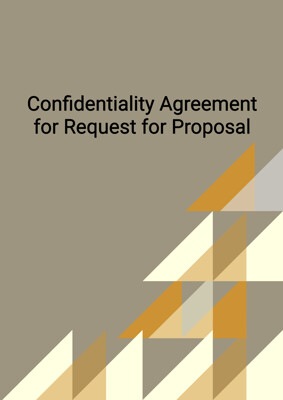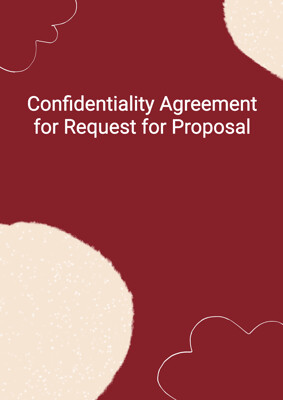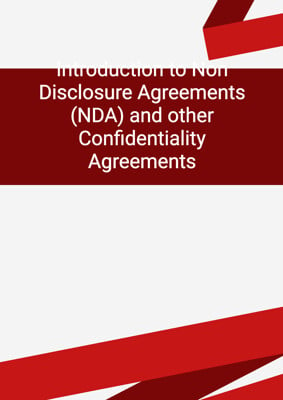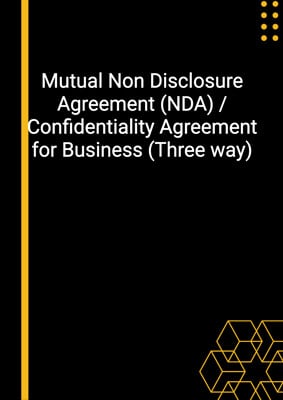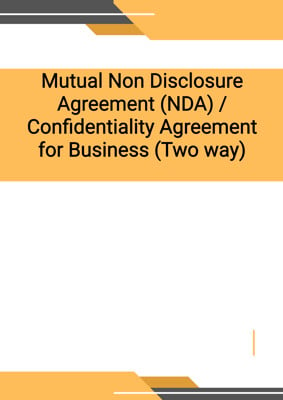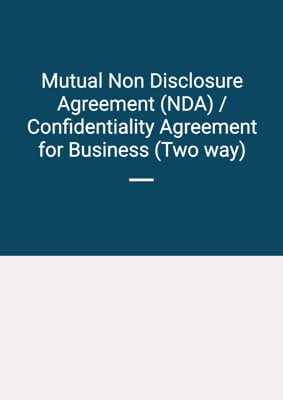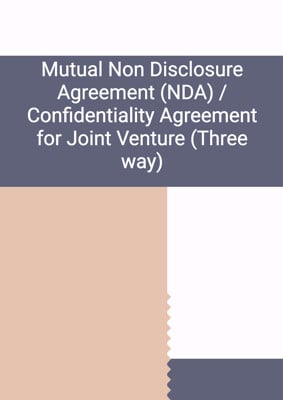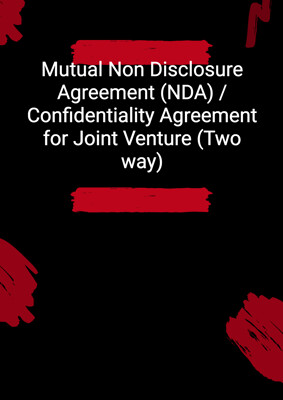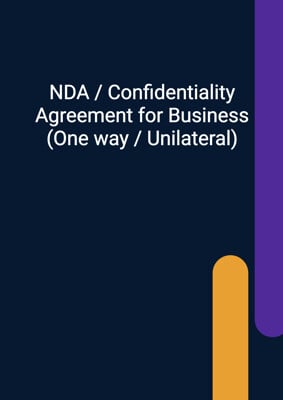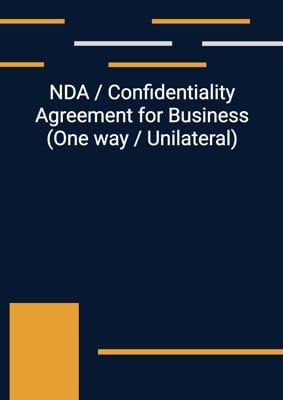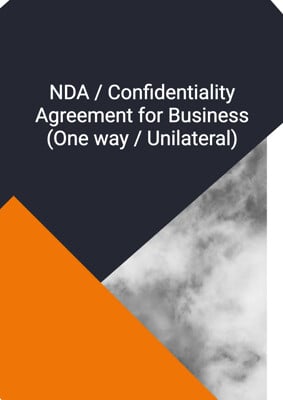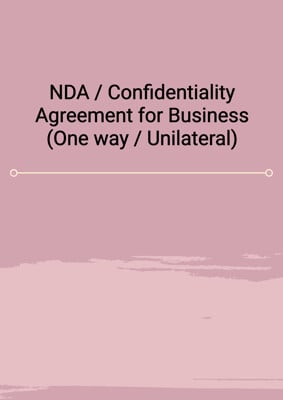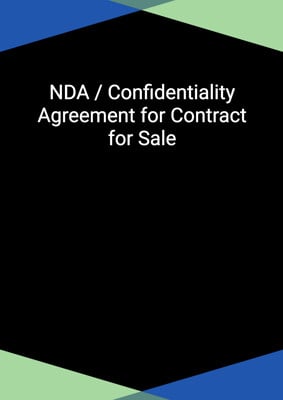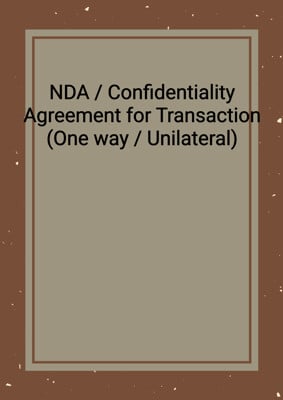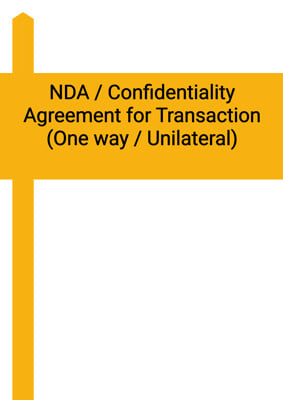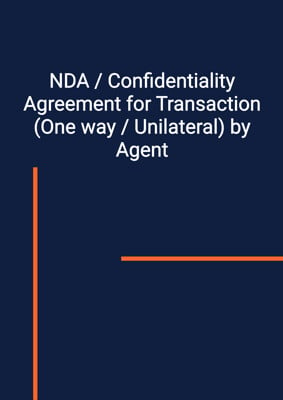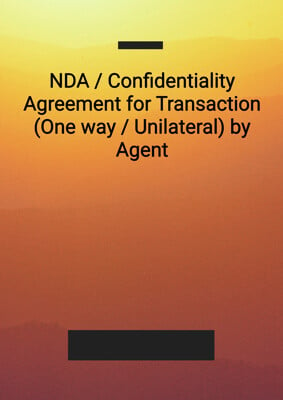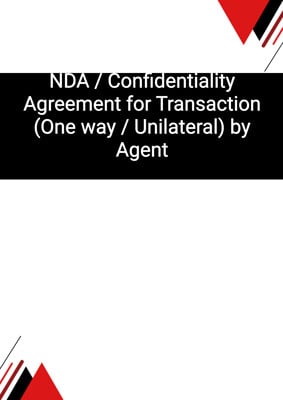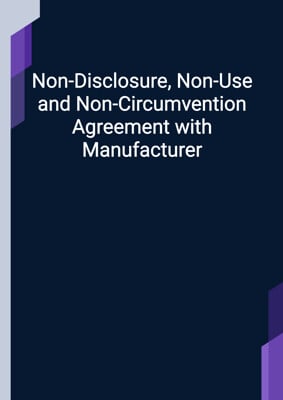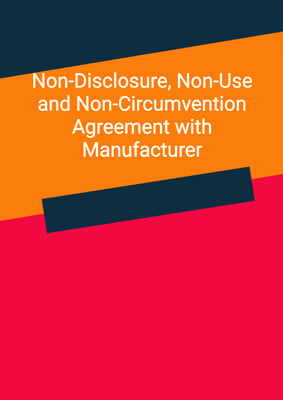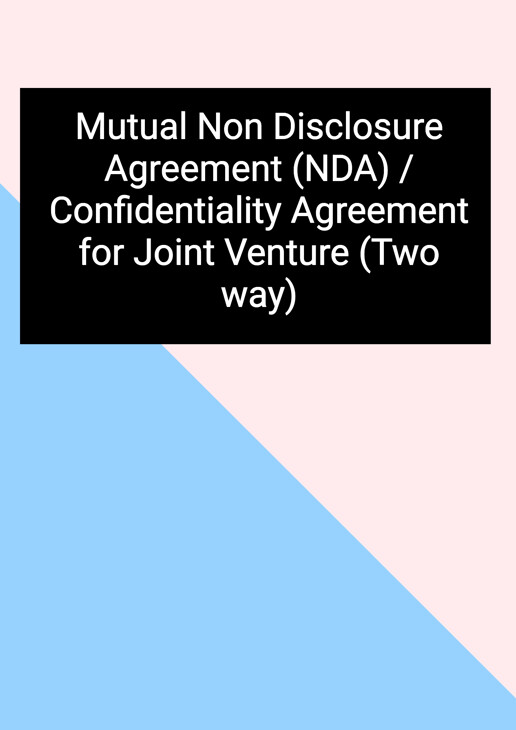
Mutual Non Disclosure Agreement (NDA) / Confidentiality Agreement for Joint Venture (Two way)
Strict / Tight
Non Disclosure agreement for a basic information exchange agreement applicable where two parties are agreeing to exchange confidential information before concluding a binding joint venture agreement. It imposes a mutual obligation of confidentiality on the parties who provide and receive information at the same time. This form imposes stricter / tighter obligations on the parties.
How to Tailor the Document for Your Need?
01
Create Document
Fill in the details of the parties. You can click the "Fill with Member’s Information" button to complete it with information saved to your account.
02
Fill Information
Please fill in any additional information by following the step-by-step guide on the left hand side of the preview document and click the "Next" button.
03
Get Document
When you are done, click the "Get Document" button and you can download the document in Word or PDF format.
04
Review Document
Please get all parties to review the document carefully and make any final modifications to ensure that the details are correct before signing the document.
Document Preview
Document Description
This document is a Mutual Non-Disclosure Agreement (NDA) or Confidentiality Agreement for a Joint Venture between Party 1 and Party 2. The purpose of this agreement is to protect the confidential information exchanged between the parties for the evaluation of a possible joint venture in the field of transaction between Party 1 and Party 2. The agreement consists of several sections.
Section 1: Definitions
This section provides definitions for various terms used in the agreement, such as 'approved representatives', 'associate', 'group', 'holding company', 'subsidiary', and 'information'. These definitions ensure clarity and understanding throughout the document.
Section 2: Obligations of Confidentiality
In this section, both parties agree to keep the exchanged information confidential and to use it exclusively for the purpose of evaluating the joint venture. They are prohibited from copying, reproducing, or storing the information without prior written approval. The receiving party is also restricted from disclosing the information to any other potential party to the transaction.
Section 3: Confidentiality Measures
This section outlines the specific measures that each party must take to ensure the confidentiality of the information. These measures include limiting access to approved representatives, keeping the information separate from other documents, implementing security measures, and obtaining written undertakings of confidentiality from approved representatives.
Section 4: Excepted Information
This section clarifies that certain information is not subject to the confidentiality obligations outlined in the agreement. This includes information that is publicly available, previously known to the receiving party, or disclosed by a third party with the right to do so.
Section 5: Return of Information
Upon request, each party is obligated to return or destroy all documents and materials containing the exchanged information. The parties remain bound by the confidentiality obligations even after the completion of the purpose or the return/destruction of the information.
Section 6: Disclaimer and Warranty
This section states that each party retains all rights to their own information and that no obligations are created to enter into the contemplated business relationship. Each party warrants their right to disclose the information and authorizes the other party to use it for the purpose.
Section 7: Announcements
Both parties agree to keep the existence and nature of the agreement confidential. Any announcement or circular relating to the agreement must be approved by both parties.
Section 8: Remedies
This section acknowledges that damages may not be an adequate remedy for a breach of the agreement. The disclosing party is entitled to seek injunction, specific performance, and other equitable relief. The receiving party is also required to indemnify the disclosing party for any loss or harm resulting from a breach.
Section 9: Waiver
This section clarifies that a waiver of a failure to perform does not constitute a waiver of any other or further failure. The rights, powers, and remedies provided in the agreement are cumulative and not exclusive.
Section 10: Assignment
Neither party is allowed to assign any rights or obligations under the agreement.
Section 11: Entire Agreement
This section states that the agreement represents the entire agreement between the parties and supersedes any other representations or warranties. It also clarifies that liability for fraudulent misrepresentation is not excluded.
Section 12: Intellectual Property Rights and License
The disclosing party retains all intellectual property rights in their information. The receiving party must return all information and documents upon request. The agreement does not grant any rights to the receiving party under the disclosing party's intellectual property.
Section 13: Governing Law and Jurisdiction
This section specifies the governing law and jurisdiction for any disputes arising from the agreement.
Section 14: Notices and Service
This section outlines the methods and timing for serving notices under the agreement. It also provides the contact information for each party.
Section 15: Rights under Contracts for Third Parties
This section clarifies that only connected persons of the parties have the right to enforce the terms of the agreement, subject to the terms of the agreement and the parties' ability to terminate or vary it without their consent.
This agreement is signed by the authorized representatives of Party 1 and Party 2.
How to use this document?
1. Provide information: Enter the Contractor's and Customer's information in the agreement, including their principal place of business. This ensures that both parties are clearly identified.
2. Specify price and completion date: Clearly specify the agreed price and completion date of the work to be carried out by the Contractor. This will ensure that both parties are aware of the expectations and deadlines.
3. Describe services: Clearly describe the type(s) of services to be provided by the Contractor. This ensures that both parties are aware of the scope of work and can avoid any misunderstandings.
4. Agree on length of warranty and time of payment: Both parties should agree on the length of warranty and time of payment after the completion of the work. This ensures that both parties are aware of the payment terms and the length of the warranty.
5. Specify damages: If the work is not completed by the completion date, specify the amount of damages per week that the Customer is entitled to. This ensures that both parties are aware of the consequences of non-completion.
Not the right document?
Don’t worry, we have thousands of documents for you to choose from:

